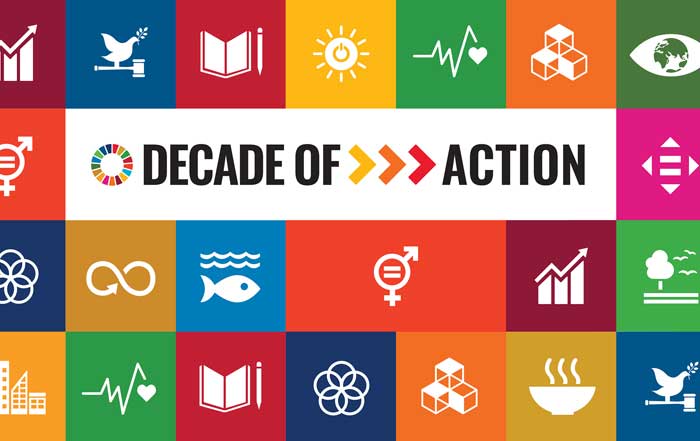In the digital age, finding a corporate job requires far more than simply submitting a résumé. The modern employment ecosystem has become a complex network of global platforms, AI-driven search tools, and professional communities where reputation, digital identity, and opportunity intersect. The most successful job seekers and recruiters today are those who understand how to use technology strategically — identifying which platforms deliver measurable value, which amplify professional credibility, and which open the right doors across global markets.
As the world economy continues to balance automation, post-pandemic hybrid work, and demographic shifts, the corporate job search has entered a new era of transparency and precision. The best job platforms in 2025 are no longer just boards displaying listings; they are ecosystems powered by data, artificial intelligence, and corporate partnerships that align companies with qualified talent faster than ever.
For readers of UpBizInfo.com, who value informed decision-making at the intersection of business, technology, employment, and global markets, understanding where to focus time and attention is essential. This analysis explores the top websites for corporate jobs in 2025, examining how innovation, user experience, and trust define their value, and why certain platforms continue to lead in a world where the line between professional networking and job searching has all but disappeared.
The Transformation of Corporate Hiring Platforms
The corporate recruitment landscape has undergone a profound transformation over the past decade. Traditional job boards that once ruled the digital employment scene have been overtaken by intelligent, networked ecosystems that use machine learning to match candidates with roles based on behavior, experience, and even inferred potential.
The year 2025 has already witnessed one of the most significant structural shifts in the employment market. The merger and subsequent bankruptcy of CareerBuilder and Monster sent shockwaves through the industry. Their inability to adapt to predictive search technologies, advanced AI matching, and mobile-first engagement underscored how quickly legacy systems can collapse when innovation stalls. Their market share is now being absorbed by more agile competitors such as LinkedIn, Indeed, and ZipRecruiter, along with regional platforms that specialize in niche verticals.
This shift represents more than technological change; it reflects a new philosophy of work. Job seekers now expect authenticity, transparency, and data-driven insights from employers. They demand clear salary ranges, verified postings, and direct communication. Meanwhile, corporations seek efficiency — tools that shorten recruitment cycles, reduce cost per hire, and surface diverse, skilled candidates from around the world.
The future of hiring lies at this intersection: intelligent technology built on human-centered values. Platforms that strike this balance dominate the corporate recruitment market of 2025.
Evaluating the Best Job Platforms
Corporate professionals in competitive markets must be strategic about where they invest their search efforts. Choosing the right job platform depends on factors such as role seniority, geography, industry, and level of personalization. The leading platforms in 2025 share several common characteristics — global reach, robust verification systems, transparent employer insights, and seamless integration with mobile and AI tools.
The essence of success in modern recruitment lies not only in finding jobs but in finding relevant jobs — roles that align with an individual’s trajectory, values, and desired impact. To achieve that, job seekers should prioritize platforms that combine credibility with intelligent search technology.
The following sections analyze these leading websites in depth, revealing how they are shaping global hiring trends and why they remain essential for ambitious professionals pursuing corporate careers in 2025.
LinkedIn: The Global Corporate Career Engine
LinkedIn remains the undisputed cornerstone of professional networking and corporate recruitment. In 2025, its influence has expanded far beyond that of a simple job board. It operates as a living marketplace of ideas, connections, and corporate visibility. Nearly every major enterprise — from Microsoft to Deloitte and Goldman Sachs — integrates LinkedIn directly into their talent acquisition pipelines.
With over one billion members and active participation in more than 200 countries, LinkedIn’s global dominance is built on three pillars: credibility, integration, and data intelligence. Its AI-powered recommendation algorithms now analyze user skills, engagement patterns, and learning history to deliver more precise job suggestions. The platform’s “Easy Apply” function, which syncs with employer ATS systems, accelerates applications without losing personalization.
LinkedIn Premium offers analytical insights into applicant competitiveness, salary benchmarks, and industry hiring trends — invaluable for corporate professionals preparing for career transitions or negotiations. Beyond applications, LinkedIn functions as a professional stage. Visibility through content creation, comments, and thought leadership often precedes formal hiring, as recruiters increasingly identify and approach candidates based on their contributions to the platform’s ecosystem.
For global professionals exploring industries like AI, Banking, or Investment, LinkedIn remains the nucleus where credibility and opportunity meet.
Indeed: Breadth, Reach, and Analytical Precision
In the vast digital labor market, Indeed continues to reign as the platform of scale and accessibility. Its primary strength lies in aggregation — pulling listings from company websites, staffing agencies, and recruiters in over 60 countries. The site’s interface remains simple but powerful, giving users access to millions of listings across multiple corporate disciplines.
What differentiates Indeed in 2025 is the integration of advanced analytics for candidates and employers alike. Job seekers can now view not only salary estimates but also the likelihood of recruiter response and historical data on how quickly similar positions were filled. The addition of real-time market indicators — such as demand surges for roles in data analytics, sustainability, or AI development — turns Indeed into a decision-support system rather than a passive listing site.
Employers benefit from automated ad campaigns that target qualified candidates based on behavior rather than demographics, improving reach while maintaining diversity goals.
For professionals pursuing leadership roles or cross-border opportunities, Indeed’s international coverage makes it indispensable. The platform is widely used in the United States, United Kingdom, Germany, and Australia, as well as emerging markets like India, Singapore, and Brazil, where multinational corporations actively recruit global talent.
To complement a search on Indeed, job seekers should maintain visibility on UpBizInfo’s Employment section for insights into evolving job market patterns and business-sector hiring forecasts.
Find Your Perfect Job Platform
Answer 5 questions to discover which platform matches your career goals
Glassdoor: Transparency and the Corporate Culture Revolution
In 2025, Glassdoor continues to redefine how professionals evaluate employers. Its hybrid model — blending verified job postings with candid employee reviews — has made it a trusted resource for transparency in corporate recruitment. For experienced professionals, the decision to join a company often hinges not only on compensation but on values, leadership style, and workplace ethics. Glassdoor makes those variables visible.
Through features such as CEO approval ratings, employee sentiment analysis, and anonymous feedback, Glassdoor allows professionals to cross-reference corporate promises with actual experience. This visibility has forced many companies to take culture management seriously. A strong Glassdoor presence has become a reputational asset comparable to brand equity or financial performance.
For job seekers, Glassdoor’s salary comparison tools and interview guides are especially valuable when evaluating offers. For employers, the platform provides a continuous feedback loop that can inform HR strategy and retention initiatives.
By connecting to external business insights from UpBizInfo’s Business page or global economy updates from UpBizInfo Economy, candidates can interpret corporate feedback within broader market contexts, building a well-rounded understanding before making career decisions.
ZipRecruiter: Intelligent Matching for the Mobile Generation
The rise of ZipRecruiter marks a shift toward user-centric design and intelligent automation in job search technology. Its AI-driven system scans résumés and recommends openings across thousands of companies, simplifying what was once a fragmented process. By sending candidate profiles directly to relevant employers, ZipRecruiter eliminates unnecessary manual searches, providing a streamlined experience ideal for time-pressed professionals.
In 2025, ZipRecruiter’s competitive advantage lies in its mobile optimization and real-time alert system. Corporate roles in finance, technology, and operations are recommended within seconds of posting, increasing candidate responsiveness and reducing hiring lag. The platform’s partnerships with organizations like IBM, Salesforce, and Accenture enhance listing credibility and ensure that corporate users find top-tier opportunities.
Its focus on AI-assisted placement also aligns with macro trends in digital transformation — a topic regularly analyzed at UpBizInfo Technology and UpBizInfo Markets, where readers can explore how recruitment technology influences corporate performance and global labor mobility.
Dice: Where Technology Meets Corporate Strategy
Among platforms specializing in technical roles, Dice remains unparalleled in bridging the gap between IT expertise and corporate leadership. Initially a hub for software developers, Dice has evolved into a strategic talent marketplace connecting data scientists, AI specialists, and systems architects with high-level corporate opportunities.
The site’s analytics capabilities, combined with its curated approach to listings, make it invaluable for professionals seeking roles that fuse technology and management — such as Chief Data Officer, AI Program Director, or Digital Transformation Lead. Employers value Dice for its credibility within the technology community, where listings undergo more rigorous verification than on generalist boards.
Dice’s evolution mirrors broader business trends, where understanding AI, automation, and cybersecurity has become critical to leadership success. The overlap between tech fluency and business vision is now a core hiring priority in corporate strategy, and Dice is well positioned at that frontier.
Jooble: The Power of Global Aggregation
In 2025, Jooble has emerged as one of the most comprehensive job search aggregators for corporate professionals seeking international mobility. Operating in over seventy countries, Jooble’s strength lies in its simplicity and reach. The platform gathers listings from thousands of job boards, corporate websites, and recruitment agencies, giving candidates a panoramic view of global corporate opportunities.
Unlike most job boards, Jooble functions primarily as a search engine rather than a content host. This model allows it to direct job seekers to the original source of the listing — often the company’s own career page — ensuring authenticity and reducing duplication. For corporate professionals seeking opportunities across Europe, Asia, or the Americas, Jooble provides a time-efficient way to scan multiple markets simultaneously.
Its AI enhancements now support localized search in multiple languages and currency-adjusted salary estimates, a vital tool for executives exploring relocation or cross-border roles. The platform’s collaboration with governmental and private sector employment agencies adds another layer of reliability. Jooble’s presence is especially strong in Germany, France, South Korea, and South Africa, where international firms are increasingly hiring through multi-market aggregators.
For strategic career planning across borders, professionals can complement Jooble searches with the global economic outlooks shared on UpBizInfo World, which tracks regional hiring trends and labor market evolution.
WhatJobs: A New Global Force in Job Search
Another rapidly growing name in corporate recruitment is WhatJobs, known for its extensive international coverage and AI-assisted search filters. By 2025, the platform has solidified its position as a trusted bridge between local and global job markets, operating in more than seventy-five countries. Its user interface allows seamless transitions between regional sites, making it an excellent tool for multinational professionals exploring both domestic and foreign opportunities.
WhatJobs stands out for the quality of its data. Unlike generic aggregators, it prioritizes accuracy by verifying whether the listed roles remain active and whether employers are legitimate. This approach combats one of the largest frustrations among job seekers — outdated or “ghost” job postings.
The platform’s partnerships with government labor departments in countries like Canada and Singapore give it institutional credibility, while its advanced search algorithms recommend roles based on users’ browsing behavior, not just their résumés. This predictive design enables professionals to discover opportunities they may not have otherwise considered.
By aligning with the ethical principles of transparency, fairness, and accessibility, WhatJobs exemplifies the shift toward responsible recruitment technology — a philosophy mirrored by UpBizInfo Sustainable, which emphasizes corporate responsibility and equitable access to opportunity worldwide.
FlexJobs and Remote.co: The Corporate Remote Work Frontier
Corporate work in 2025 is no longer defined by geography. The normalization of hybrid and fully remote structures has transformed talent acquisition strategies across industries, and platforms like FlexJobs and Remote.co are at the forefront of this transition.
FlexJobs, renowned for its commitment to verified and high-quality remote listings, focuses exclusively on legitimate remote, hybrid, and flexible roles. Its team screens every job before publication, ensuring that professionals avoid fraudulent or low-quality postings — a persistent challenge in global online recruitment. For corporate candidates in fields like project management, marketing, consulting, and IT leadership, FlexJobs remains a trusted source.
Meanwhile, Remote.co serves both as a job board and as a knowledge hub for companies navigating distributed workforces. It publishes insights into best practices, communication tools, and leadership strategies for global teams, attracting forward-thinking corporations that have embraced remote infrastructure.
For readers of UpBizInfo, these platforms highlight how technology, culture, and sustainability intersect in shaping modern employment models. Corporate leaders who adopt flexible work structures not only access wider talent pools but also contribute to environmental goals by reducing commuting and real estate footprints — reinforcing themes discussed at UpBizInfo Economy and UpBizInfo Technology.
Idealist and GlobalJobs: Purpose-Driven Corporate Careers
While profit-oriented industries continue to dominate recruitment, the 2025 workforce places increasing emphasis on meaning and impact. For professionals pursuing corporate roles aligned with social responsibility, sustainability, and international development, platforms such as Idealist and GlobalJobs serve as essential gateways.
Idealist, headquartered in New York, focuses on connecting professionals with nonprofits, foundations, and mission-driven enterprises. Although traditionally associated with NGOs, the platform has expanded its listings to include corporate roles in sustainability, ESG (environmental, social, governance) compliance, and impact investment — areas where corporations seek to balance profitability with purpose.
GlobalJobs, by contrast, emphasizes international organizations, development banks, and global partnerships. Professionals in finance, law, education, and governance increasingly use the platform to access opportunities at entities such as UNDP, OECD, and World Bank-affiliated agencies.
These sites reflect an important trend: corporations are no longer hiring purely for function but for alignment with values and global citizenship. For professionals seeking such balance, combining searches on Idealist or GlobalJobs with broader listings on LinkedIn or Indeed can yield both mission and scale.
The Importance of Corporate Career Pages
While job boards remain powerful discovery tools, many high-value corporate positions never appear on public platforms. Instead, they are advertised directly through company websites or internal recruitment systems.
Organizations such as Google, Apple, Shell, Nestlé, and Unilever operate advanced career portals that integrate seamlessly with applicant tracking systems, allowing direct engagement with talent. These pages often feature embedded analytics, diversity statements, and leadership messages that reflect a company’s culture and strategic direction.
For job seekers, monitoring these corporate portals is not optional — it is essential. Many executive and specialized positions, especially those in strategy, data governance, or innovation, are filled directly through company websites without ever being posted on job boards.
Candidates should also study a company’s digital presence before applying — examining its sustainability initiatives, financial reports, and global expansion strategies. Linking insights from UpBizInfo Business and UpBizInfo Founders provides context for understanding a company’s long-term vision and leadership priorities before committing to an application.
How Corporate Recruiters Use Platforms
From the recruiter’s perspective, 2025 is an age of data-driven hiring. The top-performing organizations leverage artificial intelligence and analytics to streamline sourcing, reduce costs, and ensure inclusion. LinkedIn Recruiter, Indeed Hiring Platform, and ZipRecruiter AI Match now enable HR professionals to automate initial screening, track engagement, and predict candidate success rates based on behavior.
Corporate recruiters increasingly adopt omnichannel strategies — distributing postings simultaneously across multiple platforms to optimize reach. They track which sites generate high-quality applicants rather than just volume, refining future campaigns accordingly.
Recruitment marketing has also matured into a specialized discipline, focusing on employer branding, employee advocacy, and storytelling. A company’s online reputation on Glassdoor or LinkedIn directly influences application rates, forcing organizations to cultivate transparent, authentic narratives about their culture and impact.
Employers that ignore online reputation risk alienating candidates before interviews even begin. Therefore, proactive management of digital reputation has become integral to modern HR strategy — a topic frequently explored within UpBizInfo Marketing, where brand trust and recruitment intersect.
Addressing Market Risks and Challenges
Despite technological advancement, the digital recruitment landscape faces several persistent challenges. One of the most significant is the problem of “ghost jobs” — listings that remain active even though positions are already filled or were never intended to be filled. This practice distorts labor statistics and wastes applicant time.
In 2025, industry research estimates that nearly one in five listings online may be ghost jobs. Some are maintained to collect résumés for future roles or to create an illusion of company growth. To counter this, platforms such as LinkedIn and Greenhouse have implemented verified posting systems that require active validation from employers every few weeks.
Another emerging challenge is algorithmic bias. While AI has improved matching efficiency, it can unintentionally reinforce inequalities if trained on biased datasets. Forward-thinking organizations now work with third-party ethics auditors to evaluate their recruitment algorithms, ensuring fairness in candidate ranking.
The final concern is the proliferation of data breaches and scams targeting job seekers. Phishing attempts masquerading as legitimate corporate postings have increased, particularly in sectors like fintech and remote work. Users must verify URLs, avoid sharing personal financial data, and rely only on established platforms.
UpBizInfo regularly explores these concerns in its News and Technology sections, encouraging a responsible digital recruitment environment grounded in trust and transparency.
Regional Variations in Job Platform Dominance
While global platforms dominate visibility, local and regional boards still play a vital role in the corporate employment ecosystem. In Europe, XING continues to be strong in Germany, Austria, and Switzerland, offering localized professional networking similar to LinkedIn but with regional relevance. In Asia, platforms like JobStreet in Malaysia, Reed.co.uk in the United Kingdom, and Wantedly in Japan and Singapore have cultivated loyal followings through cultural familiarity and local employer integration.
In North America, specialized platforms focusing on executive search, such as ExecuNet and Ladders, cater to senior-level professionals, offering premium insights and coaching services alongside listings.
These variations illustrate a critical principle: global exposure must be paired with local understanding. Job seekers targeting leadership roles across borders should align their platform strategy with market dynamics. Consulting macroeconomic updates from UpBizInfo Economy or investment forecasts from UpBizInfo Investment can guide such decisions effectively.
The Strategic Use of Multiple Platforms
Success in corporate job hunting today depends on mastering the art of platform synergy. Relying solely on one site is no longer enough. The highest-performing professionals and recruiters use multiple channels simultaneously — each for a distinct strategic purpose.
A senior executive might maintain visibility on LinkedIn for networking and thought leadership, use Indeed for broad market coverage, consult Glassdoor to analyze organizational culture, and set alerts on ZipRecruiter for AI-driven opportunities. A technology leader might use Dice for specialized digital transformation roles, while sustainability executives monitor Idealist or GlobalJobs for mission-driven positions that align with ESG initiatives.
The key is coordination — synchronizing applications, tracking submissions, and updating professional profiles across every platform. Maintaining consistent messaging, keywords, and personal branding reinforces professional authority and increases algorithmic visibility.
Corporate recruiters mirror this multichannel approach. They distribute listings across different ecosystems, analyze conversion data, and integrate results into a centralized applicant tracking system. Modern recruitment is a science of precision marketing — where every click, engagement, and application can be measured for efficiency and brand impact.
Integrating AI, Personal Branding, and Human Judgment
Artificial intelligence has transformed recruitment, but it has not replaced human discernment. The smartest job seekers of 2025 use AI tools to augment their search, not to automate it entirely. Platforms like LinkedIn, Indeed, and ZipRecruiter use predictive analytics to match résumés with open roles, but those who personalize applications and communicate directly with hiring managers still outperform algorithm-only candidates.
Digital identity and personal branding are now inseparable from employability. A candidate’s online presence — including posts, comments, certifications, and published insights — forms part of the selection process. Recruiters analyze not only technical qualifications but also communication tone, leadership signals, and thought contribution.
To enhance employability, professionals must cultivate credibility through visibility: posting relevant industry commentary, joining professional groups, and showcasing achievements that align with corporate values. Engaging authentically in discussions on AI ethics, sustainability, or leadership transforms a static profile into a living résumé that attracts organic recruiter outreach.
Readers of UpBizInfo AI and UpBizInfo Employment will recognize this synergy — the blend of data and human intuition defining modern work. AI is no longer the sole determinant; emotional intelligence and brand perception complete the hiring equation.
The Rise of Ethical and Sustainable Recruitment
A defining trend of 2025 is the emergence of ethical recruitment — a corporate commitment to fairness, inclusivity, and environmental awareness in hiring practices. Global companies are beginning to measure their recruitment impact the same way they measure carbon emissions or diversity ratios.
Platforms that promote transparency, verified postings, and anti-bias AI systems have become preferred partners for multinational organizations. LinkedIn’s Responsible AI Lab now audits job-matching algorithms for bias, while Indeed publicly publishes inclusion reports about the diversity of applicant pools generated through its system.
Meanwhile, Glassdoor integrates sustainability ratings and corporate responsibility metrics into employer profiles, enabling professionals to align career choices with ethical preferences. This evolution reflects the growing intersection between employment, sustainability, and social governance — areas consistently analyzed at UpBizInfo Sustainable.
Ethical recruitment not only enhances corporate reputation but also drives retention. Employees who join organizations that share their values are statistically more productive, loyal, and engaged. The world of work is shifting toward conscious capitalism — and the job platforms that adapt to that philosophy will dominate the next decade.
Emerging Technologies Reshaping Corporate Job Search
The recruitment landscape is evolving beyond traditional job boards. In 2025, emerging technologies are redefining how companies and candidates interact.
Blockchain authentication is being tested by platforms such as HireChain to verify employment history and credentials without intermediaries. This innovation reduces résumé fraud and improves hiring efficiency.
Virtual reality (VR) interviews are gaining traction in creative and technology sectors, where companies like Accenture and Samsung conduct immersive candidate assessments in digital environments. These experiences simulate real workplace scenarios, providing deeper insights into candidate performance.
Voice-based job search, integrated into mobile assistants, enables professionals to ask for openings or submit applications verbally, making recruitment accessible even in motion. Meanwhile, AI résumé analyzers help candidates align their documents with job descriptions in seconds, improving relevance and success rates.
Such technologies mark the convergence of human and machine intelligence — a topic deeply embedded within UpBizInfo Technology, where innovation consistently shapes the future of employment.
Regional and Global Collaboration
The evolution of job platforms also reflects the globalization of talent. Corporations now recruit across continents, often forming partnerships with international boards and academic institutions to source qualified professionals.
In Europe, corporate hiring is being redefined by labor mobility policies that promote remote cross-border work. LinkedIn Europe and Glassdoor EU integrate multilingual listings and relocation support. In Asia, recruitment ecosystems centered around Singapore, Seoul, and Tokyo have become innovation hubs, blending national platforms with global portals.
In North America, the United States and Canada continue to lead in AI-powered recruitment tools, while Australia and New Zealand emphasize sustainability and work-life balance in their national career boards. Africa and Latin America are experiencing rapid digital transformation, with platforms like Jobberman and Bumeran connecting local professionals to multinational corporations.
Understanding these global dynamics helps job seekers and employers navigate international hiring with cultural intelligence and strategic foresight. UpBizInfo’s regional analyses on World and Markets sections provide essential guidance for organizations and individuals positioning themselves within the interconnected world of work.
Common Mistakes Professionals Make Online
Even in an age of AI-assisted recruitment, human error remains the biggest obstacle to job success. Many candidates still make avoidable mistakes that undermine their digital presence. Submitting identical résumés to multiple companies without customization signals lack of intent. Ignoring personal branding or failing to engage with content on professional networks reduces algorithmic visibility.
Neglecting privacy settings can also harm credibility. Recruiters frequently review public posts, and inconsistency between résumé tone and online behavior raises red flags. Likewise, failing to update skills or certifications, especially in fast-evolving domains such as artificial intelligence, finance, or cybersecurity, can make a profile appear outdated.
The solution is consistency and care. Every element of a candidate’s digital footprint should align with professional goals — from résumé keywords to the tone of online interactions. As explored in UpBizInfo Jobs, professionalism in the digital realm is an extension of one’s corporate reputation.
How Corporations Are Adapting Their Recruitment Strategies
Corporations in 2025 are not just using job platforms — they are re-engineering them. Forward-thinking companies integrate recruitment into holistic digital ecosystems that include branding, social media, and data analytics.
Unilever, for instance, combines AI-based psychometric assessments with LinkedIn data to predict cultural fit. Google relies on AI for résumé parsing while maintaining a rigorous human review process to ensure fairness. HSBC integrates sustainability values into its recruitment campaigns, emphasizing ESG credentials alongside technical skills.
These examples highlight the dual focus of modern recruitment: efficiency and empathy. Companies are expected to be both data-driven and human-centered. They are judged not only by what they offer but by how they treat candidates.
Job seekers should remember that applying for a role is a two-way evaluation. Just as corporations screen applicants, candidates now assess employers through transparency portals and cultural analytics. This mutual evaluation marks a new equilibrium in professional relationships — one based on mutual respect and shared purpose.
The Future Outlook for Corporate Job Platforms
As 2025 advances, several converging trends will define the next phase of corporate recruitment. Artificial intelligence will continue to dominate matching systems, but the emphasis will increasingly shift toward explainable AI, where algorithms justify their recommendations transparently.
Decentralized verification via blockchain will become standard, allowing job seekers to maintain secure, portable professional identities across platforms. Subscription models may decline as platforms compete for trust and engagement rather than transaction volume. Meanwhile, the rise of “micro-platforms” — niche sites for specific industries like fintech, renewable energy, or global logistics — will challenge large incumbents by offering depth over breadth.
For corporate professionals, adaptability remains the ultimate advantage. Those who continuously learn, network authentically, and use platforms intelligently will not only find employment but also shape the organizations defining the global economy.
For readers of UpBizInfo.com, this convergence of technology, transparency, and human aspiration mirrors the publication’s core ethos: empowering professionals and businesses to grow responsibly in an interconnected world.
Ok Job Chat Over!
The digital job market of 2025 represents both opportunity and complexity. The once simple act of searching for a corporate role has evolved into a multidimensional process involving artificial intelligence, global data, and human values. Platforms such as LinkedIn, Indeed, Glassdoor, ZipRecruiter, and Dice continue to lead, while aggregators like Jooble and WhatJobs, along with remote-focused portals such as FlexJobs and Remote.co, expand the boundaries of access and inclusion.
In this ecosystem, professionalism extends beyond résumés; it manifests through digital behavior, ethical awareness, and continuous learning. Companies, too, are held accountable for transparency and fairness, ensuring that technology serves not only efficiency but humanity itself.
For UpBizInfo’s international audience — executives, entrepreneurs, and forward-thinking professionals — the message is clear: the future of work belongs to those who combine intelligence with integrity, and technology with purpose. The right job platform is not merely a tool; it is a gateway to transformation, connecting ambition with opportunity across the corporate world.








